Patreon MUSICARTA Premium
Chromatic Scales
Chromatic Scale-tone Practice Patterns
Semitones are slippery characters! It's a challenge to keep track of them, but they're essential for filling out melodic lines and adding color to chords.
They present a unique challenge to the hand and fingers, so regular practice is essential to ready the hand to close-quarter work.
Regular, dedicated work with semitones will develop your aural skills, and these pattern-based finger drills will challenge you to precise listening and thinking.
|
Chromatic |
Download the PDF for the Scale City Chromatic Scales here.
Reading the pattern shorthand
Take a look at a sample pattern: No.1, ascending.
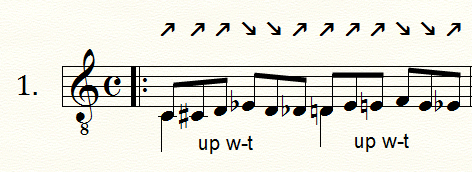 |
The arrows above the stave show whether you go up or down a semitone to the next note. You will be told if the movement is more than a semitone. |
The shorthand below the music tells you how far up or down each six-note pattern takes you. 'Up w-t' is shorthand for "up a whole tone" - from C to D.
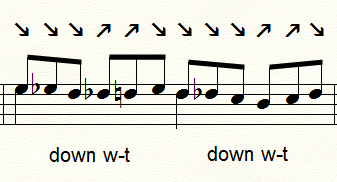 |
The descending pattern is always the inversion (vertical flip) of the ascending pattern. (Check the sequence of up/down arrows to verify.) Note that both halves of the bar are the same pattern - not always the case. |
Try your utmost to 'get your head' round the symmetry of the ascending and descending patterns. It's high-level attention-paying that pays off in spades!
No.1
All semitones: four up and two down makes net two up, therefore, rises a whole tone (w-t).
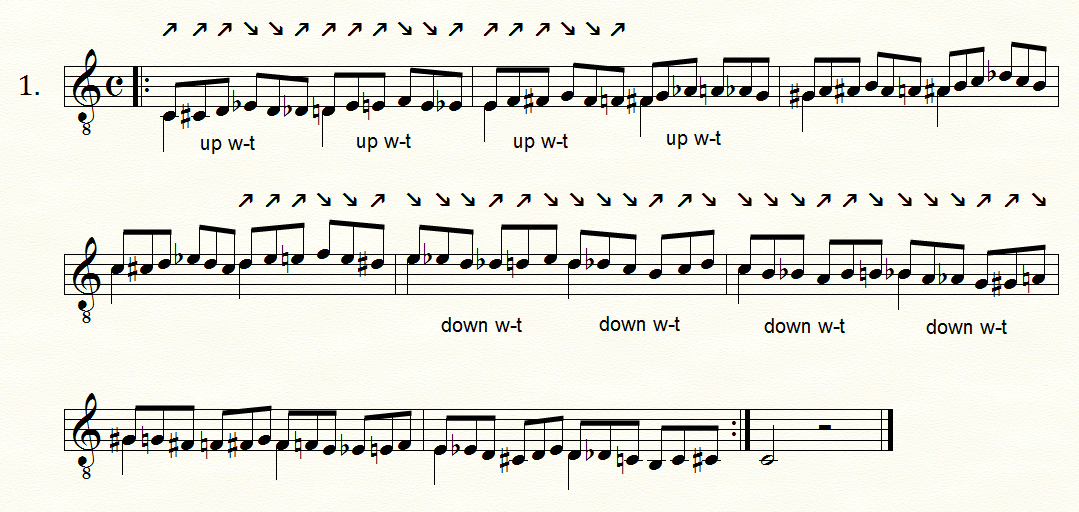
You should ideally be playing from a mental 'shorthand' version based on the ascending and descending patterns.

Yes, the performance speeds up! Let's not languish in our comfort zones! These chromatic runs should blur into a smear of sound!
About fingering
You could try to stick to the approved chromatic scale fingering, but in reality you're more likely to end up 'winging it' and fingering instinctively.
This usually means you teeter on the edge of running out of fingers and rescue the situation by the skin of your teeth.
Exactly as it should be!
Don't be surprised to find yourself using finger five or using the thumb on black keys. All you want is for it to sound effortless!
No.2
Also 'four up and two down', but the 'two down' come at the end of the six-note run.
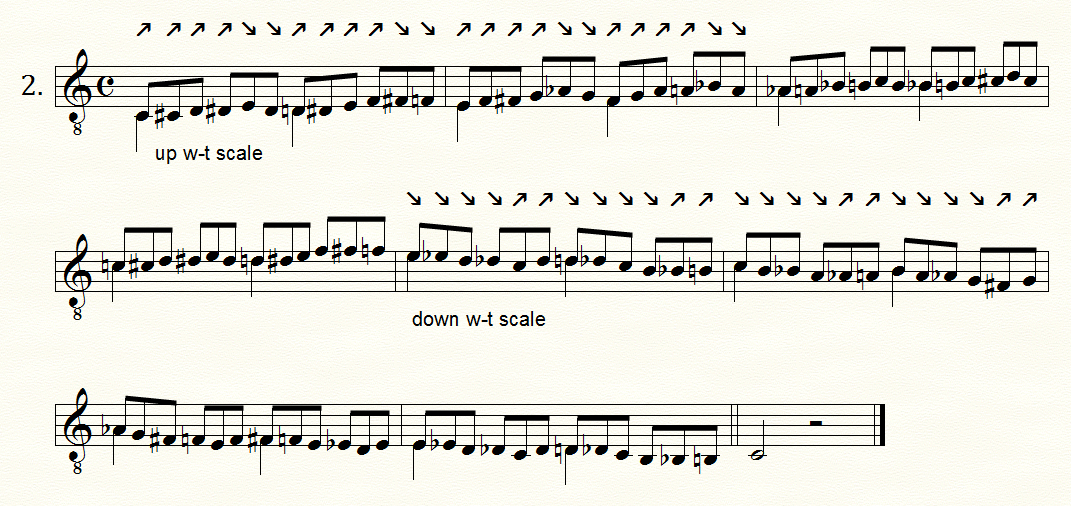

No.3
Still all semitones; five up, one down, therefore net four up - rising a major third. A much faster up/down movement!


No.4
All semitones, but the two halves different, and rise/fall by major third (M3) and whole tone (w-t).
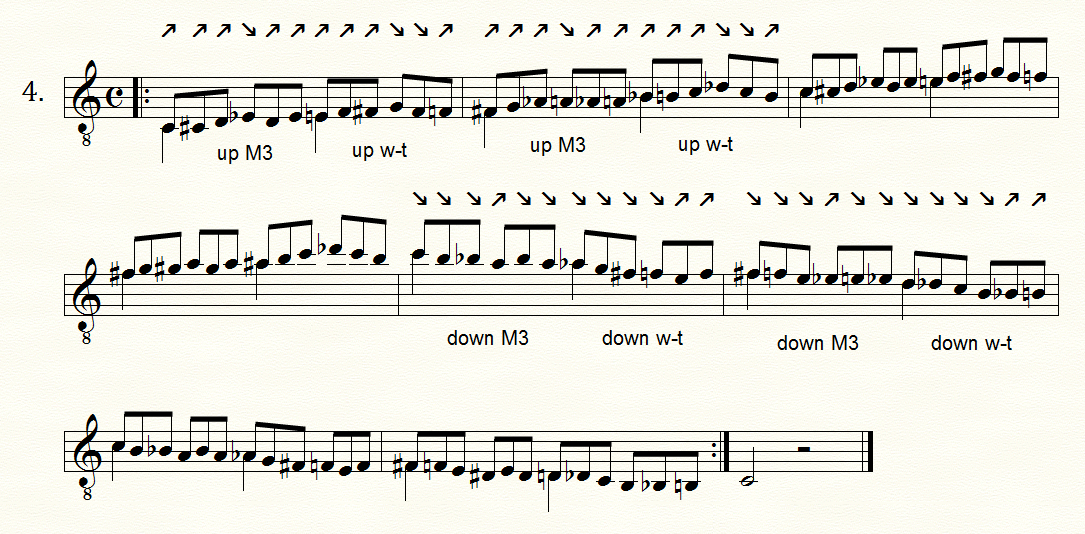

No.5
Semitones plus a minor third (m3) skip.
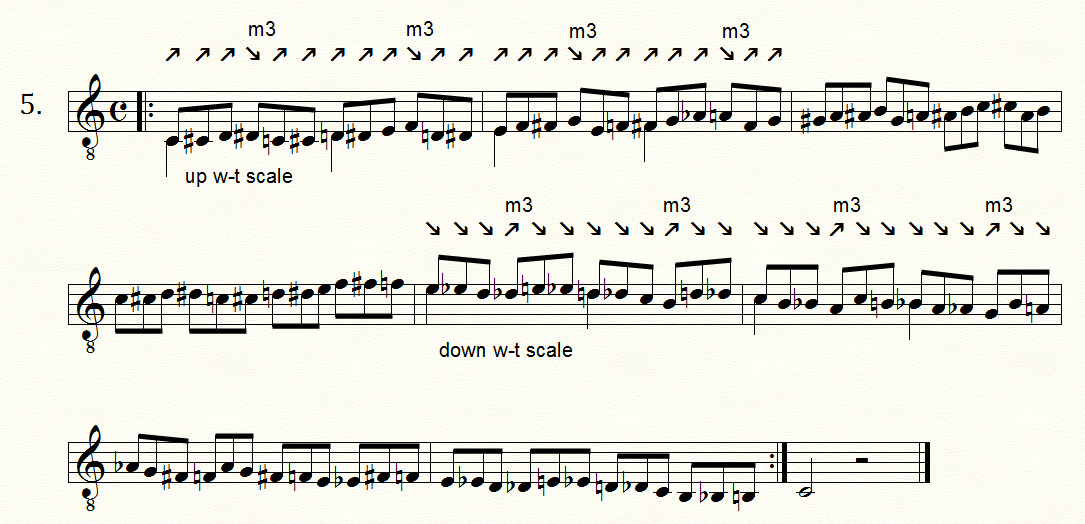

No.6
The two halves of the bar are different, and rise/fall by different amounts.
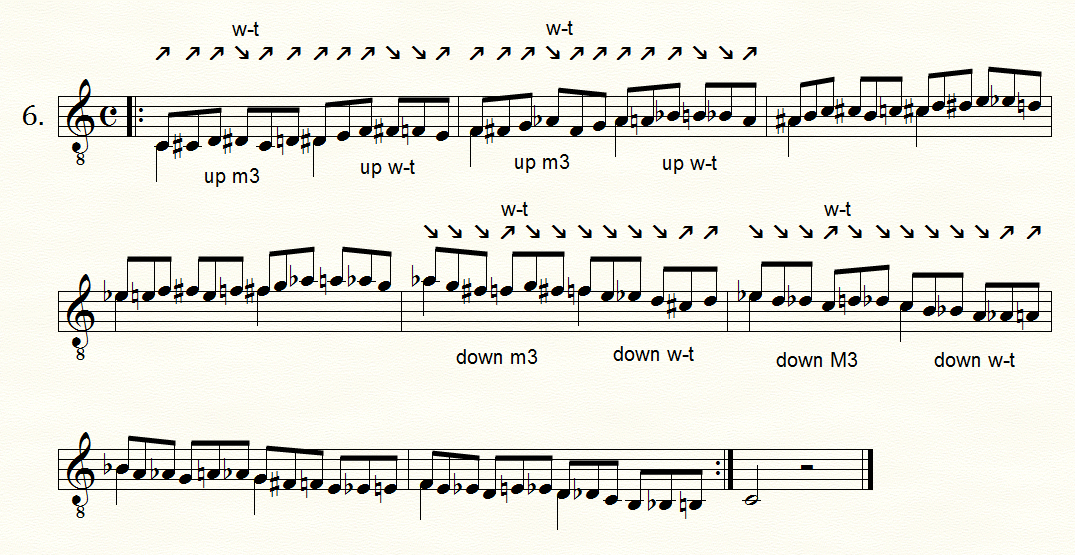

No.7
Two minor third skips in the pattern.
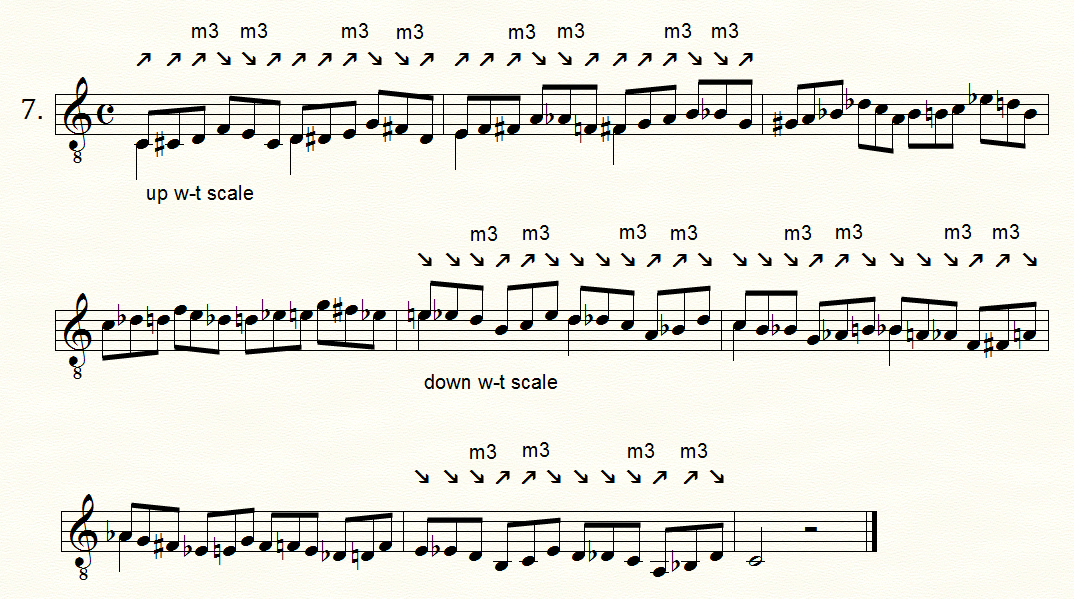

Continue to visit the Chromatic Scale pages here at Scale City.
|
Chromatic |
You're well prepared to go on to the Chromatic Dominant module now, for a crash course in a practical application of chromatic scales in popular music.
|
Musicarta Patreon
SCALES SERIES
Reference
Scale fingering
Scale Practice Patterns (SPPs)
Scale-tone practice patterns (STPPs)
Chromatic Scales
Diminished Scales
|
The MusicartaA methodical approach to keyboard syncopation for
|
PUBLICATIONS
exciting keyboard
creativity courses
CHORDS 101
WORKBOOK

~HANON~
video course

Musicarta
Patreon
PENTATONICS
WORKBOOK
video course

Creative Keyboard
video course

BEAT AND RHYTHM
WORKBOOK

- Volume 1 -

12-BAR PIANO
STYLES WORKBOOK

MUSICARTA MODES
WORKBOOK

PIANO STYLE

CANON PROJECT
video course

VARIATIONS
video course


- Piano Solo -
video course

- Piano Solo -


YouTube playlists





 THE LOGO
THE LOGO
